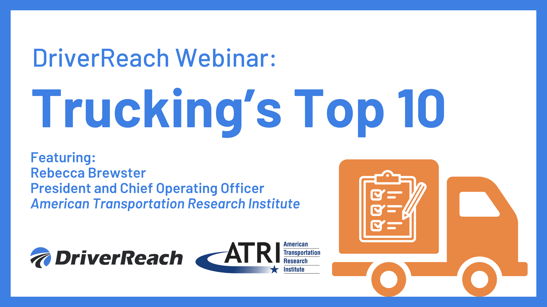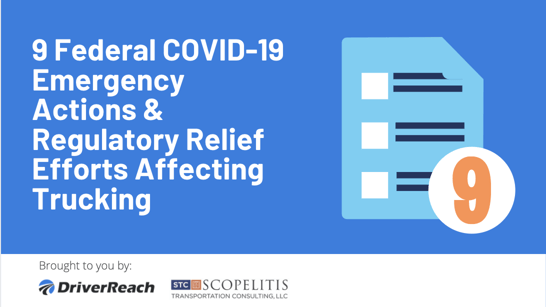Article contributed by industry regulatory expert, Dave Osiecki of Scopelitis Transportation Consulting and consultant to DriverReach. For more information on Scopelitis Transportation Consulting, visit: https://www.scopelitisconsulting.com/
In mid-February, the Federal Motor Carrier announced that nearly 8,000 positive substance abuse tests of commercial drivers have been uploaded into the newly created Drug & Alcohol Clearinghouse since it took effect on Jan. 6, 2020. It is the first indication that the new database is working. Before these drivers can operate a commercial motor vehicle requiring a CDL again, they will need to visit a substance abuse professional to undergo evaluation and treatment designed to ensure they do not pose a danger to themselves or their fellow motorists. To declare the Clearinghouse a success however, the entire industry must participate. That’s why FMCSA created strong enforcement mechanisms and penalties for non-compliance.
Enforcement – FMCSA has made clear that full compliance is expected; and they intend to use all the tools at their disposal to enforce the new rules. While FMCSA will rely on traditional enforcement mechanisms (e.g. safety investigations and roadside enforcement) to ensure compliance, they can now leverage new technology to help identify those that may be skirting the rules. Specifically, the Clearinghouse offers improved visibility into carrier and driver compliance in two ways.
First, FMCSA now has a breadcrumb trail leading them directly to carriers who are not properly verifying their drivers are qualified to drive base on previous drug or alcohol testing history. With relative ease, FMCSA can use Clearinghouse data to identify which DOT numbers are not running annual limited queries on their drivers. Also, by comparing Clearinghouse data with the number of drivers a carrier reports on its biennial MCS-150 update, FMCSA can identify carriers that may not be requesting enough limited queries. These carriers can expect a call or a knock on their door from a safety investigator looking to verify compliance.
Second, driver qualification data from the Clearinghouse is now accessible to roadside enforcement through existing roadside inspection technology making it easy identify drivers who are disqualified based on a drug or alcohol violation reported to the Clearinghouse. Several drivers have already suffered this unenviable consequence and have been cited for violations as a result. Beginning April 1, 2020, disqualified drivers will be placed out-of-service.
Penalties – FMCSA will rely on traditional enforcement mechanisms to investigate and assess penalties against carriers who fail to comply. This means conducting a focused review targeting only a carrier’s drug and alcohol program, or a full compliance investigation which takes a detailed look at all aspects of a carrier’s safety controls and compliance. Employers who violate any provision of the Clearinghouse rules can be subject to civil and/or criminal penalties including fines up to $2500 per violation.
Most safety experts agree that, in the long run, the Clearinghouse will improve highway safety. To maximize this benefit however, everyone must participate. FMCSA recognizes this and intends on using all the tools at its disposal, both new and old, in pursuit of highway safety. Knowing the rules and complying with them is the key to making sure your company stays off FMCSA’s radar.
Stay up to date on CDL trucking trends! Be sure to check out the DriverReach blog or follow us on LinkedIn for other relevant articles and head over to our webinars page for an up-to-date list of upcoming events and on-demand recordings.
Interested in seeing DriverReach’s modern Recruiting and Compliance Management System in action? Take DriverReach for a test drive!









